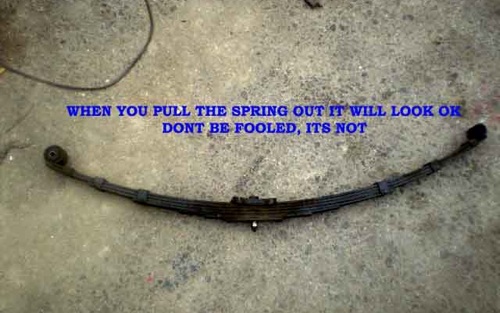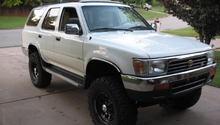Toyota Tacoma: Common Problems
The Toyota Tacoma has experienced some mechanical problems in recent and past times; however, many are easily and cheaply fixable.
This article applies to the Toyota Tacoma (1996-2015).
While highly rated for 'exceptionalism' and 'reliability' when it comes to on and off-road traveling, towing within the maximum tow capacity of the vehicle and overall utility, the Toyota Tacoma is also known for several common problems. Some of these problems are quickly and easily fixable, requiring only replacement parts and a little TLC from a home garage or driveway, while others require professional know-how and advanced tools. Let's walk through some of the problems affecting the Toyota Tacoma and go over which repair options might be best for each job.
Toyota Tacoma (1996-2015)
Saggy Rear Leaf Springs
Should the rear leaf springs in your Toyota Tacoma truck begin to sag, you will need to update them with an aftermarket replacement. Deaver Spring and Alcan Spring are the go-to brands for the Toyota Tacoma. Sagginess is more likely to occur when heavy loading is common or excessive vehicle wear takes place through the years.

Faulty/Leaky Water Pump
Many Tacoma owners have complained of water pump issues; some happening as early as the 30,000-mile marker or earlier. The likely culprit is a faulty seal, which can lead to a slow leak. Check for signs of water on your pavement after your truck has been parked for some time. The cost of this repair should be well under $100.

Jerking and Stuttering Problems
A number of culprits could be behind your Tacoma experiencing the sensation of jerkiness and shuttering while you drive, including but not limited to, a misfire, bad spark plugs and wires, as well as a faulty torque converter. From the easy to difficult, start with the basics. When did you last change your plugs and wires? Spark plug wires are usually pretty durable, but asking more than 50,000 to 75,000 miles of them is a stretch. Visually inspecting your spark plugs is easy and gives you great insight to the running condition of your truck. Consider inspecting your spark plugs every other oil change. It's easy to do and ensures that your truck is running healthy. Consider replacing your plugs every 40,000 to 50,000 miles or so if you are using regular copper-tipped plugs. Have your truck inspected by a licensed mechanic for a complete diagnosis.

Common Questions
How favorable is the resale value on a Tacoma?
The resale value of the (1996-2015) Toyota Tacoma is said to be very high. However, do your research, practice good negotiation skills and ask lots of relevant questions before signing on the dotted line and you should find a good deal on your next Tacoma (new or used).
How often should I replace the intake manifold gaskets in my truck?
Approximately every 60,000 to 80,000 miles. They are thin rubber gaskets which tend to dry up and crack due to normal heat produced the engine. Faulty gaskets will result in a noticeable vacuum leak and decreased performance.
What's the best routine maintenance on the Toyota Tacoma?
Replace your fuel filter as well as change your differential and transmission oil at regularly scheduled intervals. Change your spark plugs and wires approximately every two years, depending on how often you drive.
Any problems specific to the Tacoma 3.4-L?
There have been some reports of power loss, rough idling, and a decrease in gas mileage over time; say, around the 90,000-mile marker. Run your codes if any of these problems arise and make an appointment to see your local Toyota dealer. Problems with the engine control module (ECM) have also been reported among some Tacoma owners.
Common Issues
Weak Transmission
The Toyota Tacoma is not universally known for having a superior transmission. As such, you will need to keep an eye on your transmission and how it acts through the years. Be on the lookout for: lack of response, leaking or low fluid, grinding or shaking, problems shifting gears, a burning smell and/or a dragging clutch. Another tell-tale sign of a bad transmission is the transmission warning light appears on your dashboard.
Weak Differential Mounts
This is a cheap and easy fix. Simply replace your worn or cracked differential mounting bushings with a new set when you start to hear clunking sounds coming from the differential area.
Leaky CV Boots
Another easy and quick repair, leaky CV boots can be swapped out for new ones for as little as $180 to $350. We recommend installing the Downey Off-Road CV boot kit; however, competitor products and brands are also available.
Related Discussions
- Common Problems - YotaTech.com
- Engine Misfires with Tacomas - YotaTech.com
- 3.4L V6 Problems - YotaTech.com
- Any Notorious Problems with Tacoma - YotaTech.com






